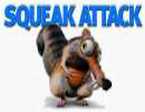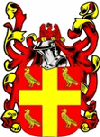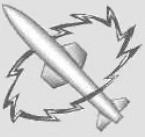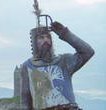herwin
Posts: 6059
Joined: 5/28/2004
From: Sunderland, UK
Status: offline

|
quote:
ORIGINAL: freeboy
two ?'s from an old time witp player
A. can the japs build a flight school, givingthem better and more late war pilots as an option?
B. Does the surface combat still use the same "we do not really have surface action" rutines?
my old bitch about needing to be able to run down slow tf's etc and other surface action upgrades?
If you want surface actions other than at landing beaches and bases, you will probably have to accept that the game engine will manoeuvre your TFs tactically. Currently, you have patrol reaction (where a SAG on patrol will intercept SACs attacking bases), and changes to the TF track in reaction to nearby TFs. We complain about that already, but it's the only way to get tactical responses in the game.
If you want it bad; you'll get it bad.
Nonetheless, something of the sort is probably necessary. So please comment on the following:
ATFs:
1. Should manoeuvre tactically to launch and recover airstrikes. This means they will slow down to allow the carriers to steam into the wind for landings and take-offs. Basically this can be modelled as the ATF not advancing during the launch or recovery periods, but still paying full speed fuel costs.
2. Should manoeuvre tactically to approach targets during periods of visibility. (If beyond 200 nm, they should approach to about that distance.)
3. Should manoeuvre tactically during air attack.
4. Should manoeuvre tactically to maintain a distance of at least 200 nm from known enemy SAG locations at dusk or periods when aircraft are grounded.
5. Should avoid accidentally engaging enemy coastal defences at any time.
SAGs:
1. On patrol, should react to SAGs attacking local bases.
2. When on patrol or in distant support of TFs, should maintain a distance of about 200 nm from spotted ATFs during periods of visibility.
3. When on patrol or in distant support of TFs, should attempt to engage spotted ATFs during periods when aircraft are grounded.
4. When on patrol or in distant support of TFs, should react towards spotted enemy TFs of inferior strength.
5. When on patrol or in distant support of TFs, should react away from spotted enemy TFs of superior strength.
6. Should avoid accidentally engaging enemy coastal defences at any time.
Implementation probably involves scoring the hexes around each TF based on the listed factors, the presence of land, the presence of enemy and friendly aircraft, the accessibility of the hex, and the next way point of the TF. The TF then moves to the most attractive hex. Think of the TF as a robot--what should it do?
1. It can react reflexively--for example, to launch and recover aircraft and receive air attacks.
2. It can react based on what has worked in the past. This would involve fine-tuning during alpha testing to generate the necessary payoff matrices. Look at actor-critic systems as a way of doing this.
3. It can react based on short-term plans. Again, this would involve fine-tuning, but it should be a lot easier than developing a chess-playing programme. The important element is a payoff estimate for each possible plan.
4. It can act based on long-term plans--basically following the player's orders. The payoff for doing that should depend on whether the player designates the mission as critical or desirable, and what the exact mission is.
Reflexive actions should take priority. The remaining three can be weighted (perhaps 0.3, 0,3, 0.4) to get scores for each destination hex within range of the TF. The TF then moves to the most desirable destination hex.
< Message edited by herwin -- 1/3/2008 11:44:57 AM >
_____________________________
Harry Erwin "For a number to make sense in the game, someone has to calibrate it and program code. There are too many significant numbers that behave non-linearly to expect that. It's just a game. Enjoy it." herwin@btinternet.com |
 Printable Version
Printable Version



















 New Messages
New Messages No New Messages
No New Messages Hot Topic w/ New Messages
Hot Topic w/ New Messages Hot Topic w/o New Messages
Hot Topic w/o New Messages Locked w/ New Messages
Locked w/ New Messages Locked w/o New Messages
Locked w/o New Messages Post New Thread
Post New Thread